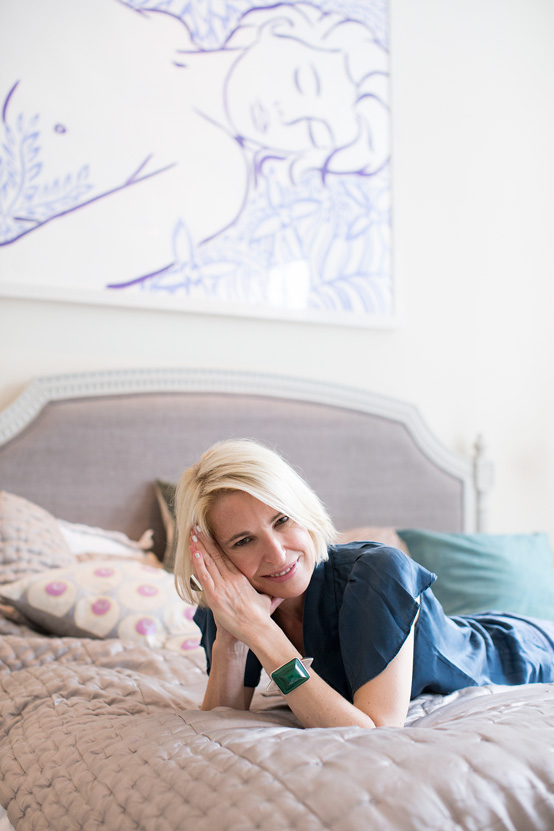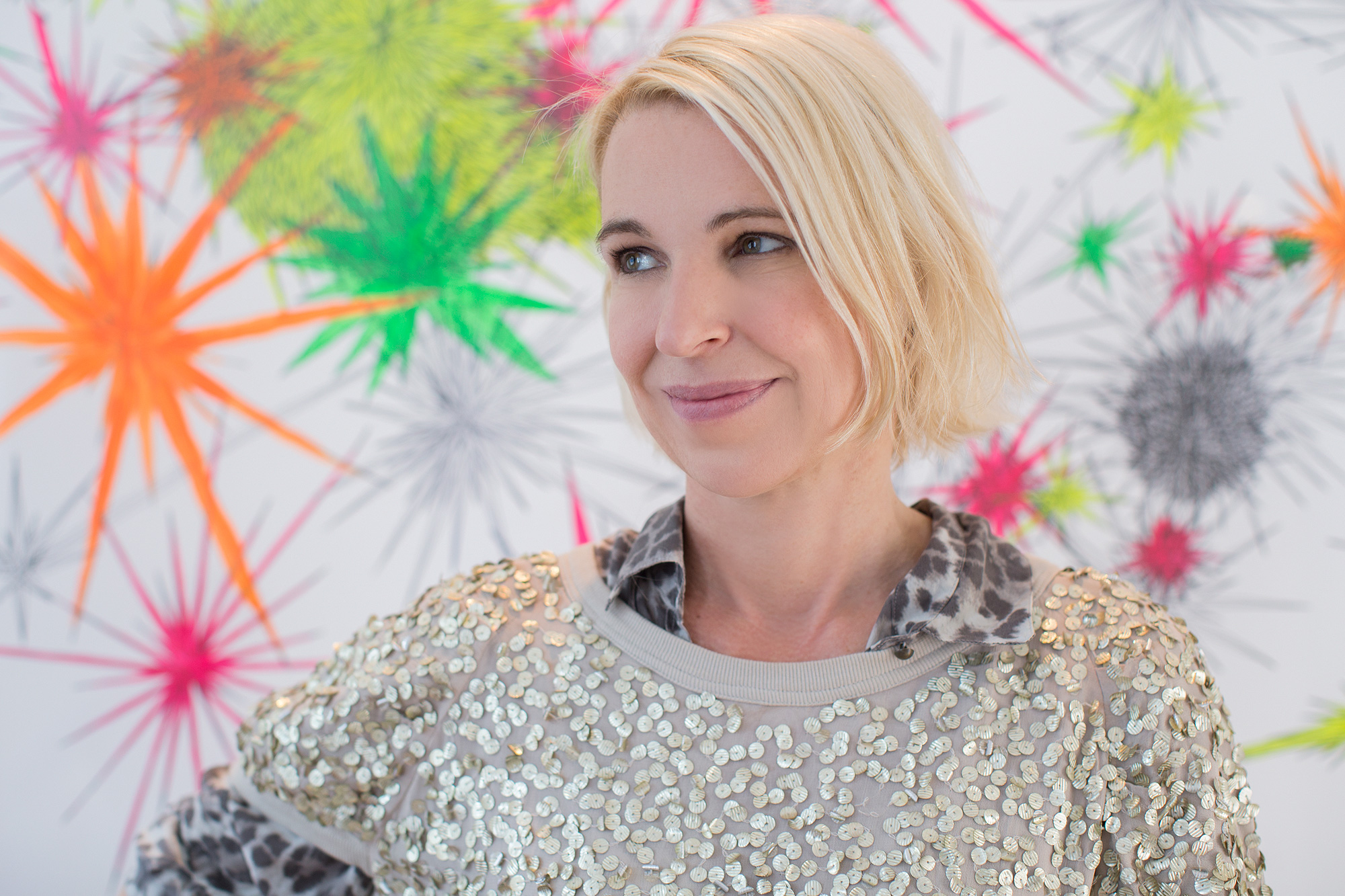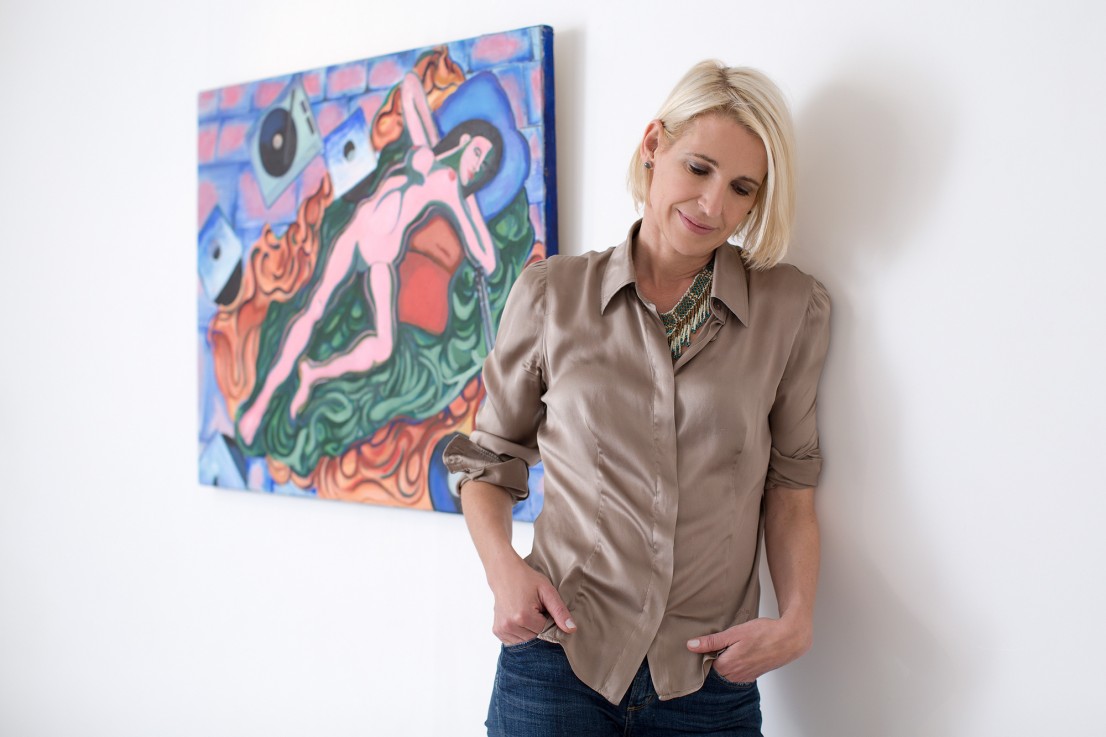I started my career in fashion, working for Bruce Oldfield when I was 20. Over the next 10 years I worked in television and launched and ran a shop called Risk, which showcased the edgier side of British emerging talent. I also turned my hand to the music industry and assisted a fashion photographer’s agent. I honestly did it all. Doing so much across these industries allow me to experience how artists work their creativity into a commercial business.
I was a high-grade achiever during school. I loved History of Art, History and English but I was lousy at exams. Back then, many of my friends were like me – they just wanted to get working, earn their own money and move out of home. It was all about getting up and travelling. Things are very different now and I’m not convinced that the route is necessarily for the better: the added pressure of achieving grades, the high price of education, years of paying back student loans, living at home for long, little work experience and no guarantee of a job at the end of it. I think education should be a lifetime of reading and studying a subject, because you’re truly fascinated by it. I planned to university to study social anthropology but I came to the conclusion it just didn’t compliment what I wanted to do.
Hosting an exhibition involves a huge amount of planning: the easier you make it look, the better you are at your job. The challenge is always in the fine detail. You need to always keep working your talent too. Never get complacent, be a perfectionist and go the final furlong to create a great exhibition. What’s not to love? When I started hosting my own exhibitions, I was part of the original ‘pop up gallery’ movement, working for myself and with partners. One of the big exhibitions I was involved in was with Ronnie Wood. From 2006-2007 I co-curated his gallery, Scream in Mayfair, and the second year I curated and directed it. We met after I bought a piece from his brother in law and met a young dealer who both introduced me to the family. It was one of those life-changing moments.
 Because I hadn’t gone to university, something inside me felt like I couldn’t go into the mainstream art world, something that’s silly now I look back. So rather than going that route, I decided to do what I love in my own way. I hosted exhibitions all over London, working with artists I admired in an easy way, outside the traditional system. I saw myself as a spokeswoman for the artist. I learnt the hard way that some exhibitions are more successful than others but my passion and believe drove me to keep trying to improve. It’s difficult being an artist today. You have to make a living, stay true to yourself and understand how the art market works. I think the choice between starting out on your own self-taught or going to art college is a hard one. They’re often forced to work with absolutely no guarantee of being able sell and continue doing what they love. It’s a long hard road and determination is only the beginning.
Because I hadn’t gone to university, something inside me felt like I couldn’t go into the mainstream art world, something that’s silly now I look back. So rather than going that route, I decided to do what I love in my own way. I hosted exhibitions all over London, working with artists I admired in an easy way, outside the traditional system. I saw myself as a spokeswoman for the artist. I learnt the hard way that some exhibitions are more successful than others but my passion and believe drove me to keep trying to improve. It’s difficult being an artist today. You have to make a living, stay true to yourself and understand how the art market works. I think the choice between starting out on your own self-taught or going to art college is a hard one. They’re often forced to work with absolutely no guarantee of being able sell and continue doing what they love. It’s a long hard road and determination is only the beginning.
I have a huge amount of respect for the fairs like Frieze and their popularity right now. What they have achieved is no mean feat and their vision has helped solidify London as one of the world’s leading art markets. It’s created an alternative reality to viewing contemporary art. People educate themselves by attending and have access to a wide range of work. It encourages conversation and controversy and that has to be a goo thing. On the flipside, being involved in fairs like that come with substantial associated costs so it’s disappointed that small independents like myself are inhibited by factors like that.
Art can be an expensive and to some, an intimidating hobby. My time spent working at Christie’s was invaluable for that reason. It opened my eyes to a whole world of expertise. I absorbed a wide variety of different art and objects coming to the market. The chain of work coming in, how the art is assessed and researched and finally what happens in the auction room. I learned so much about perceived value and how artwork is priced. If you’re new to buying art, I can only suggest taking the time to educate yourself through galleries and museums. Look at auction houses and art fairs and take note of how much pieces sell for among the style of art you’re interested in. Train the eye before releasing the wallet.
This interview has been edited and condensed. Photographs by Dvora.


